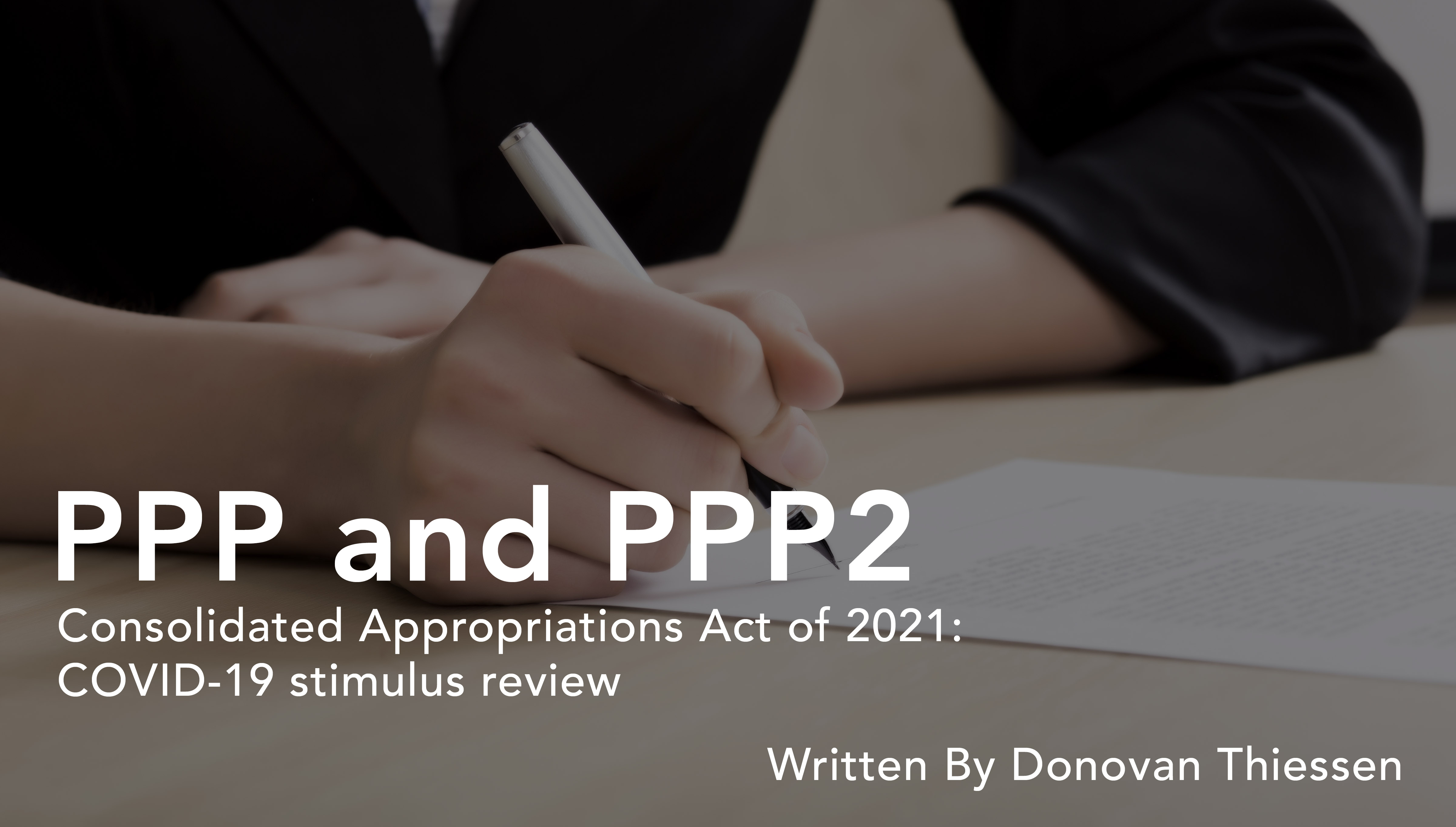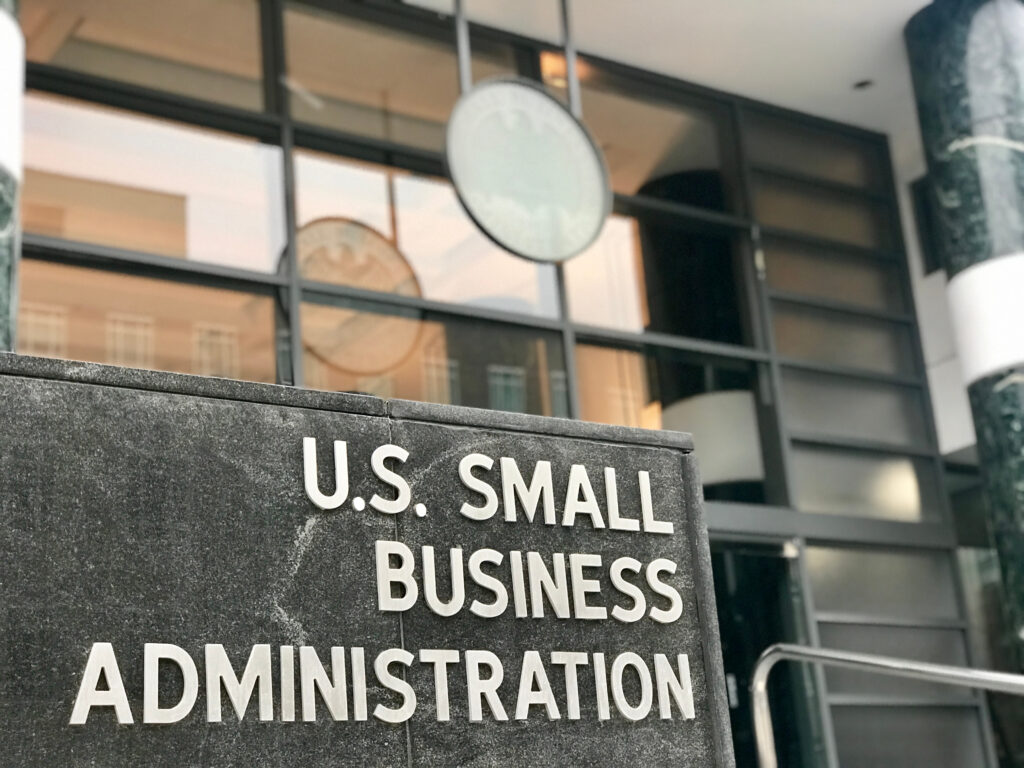 In response to the COVID-19 related quarantines and subsequent economic disaster, Congress approved the Payment Protection Program (PPP) in March 2020. Designed to cover small businesses’ payroll, rent and other costs, the program’s initial funding of $349 billion was distributed within the first two weeks of the program. Another $310 billion was approved by Congress in April 2020 and funding continued until August of 2020. Generally, if you receive(d) and used the funds for the designated expense types, you could apply for loan forgiveness and the loan would be treated as a grant; the loan would not have to be repaid. Now 9 months into this program, many people have been anxiously waiting to apply for loan forgiveness, hoping that Congress might make rumored changes to the forgiveness rules. At last, the Consolidated Appropriations Act of 2021 was signed into law on December 27, 2020 and provides crucial changes to the forgiveness rules, and a new round of PPP funding to businesses. This article will discuss important aspects of the PPP loans, including forgiveness and deductibility of the expenses.
In response to the COVID-19 related quarantines and subsequent economic disaster, Congress approved the Payment Protection Program (PPP) in March 2020. Designed to cover small businesses’ payroll, rent and other costs, the program’s initial funding of $349 billion was distributed within the first two weeks of the program. Another $310 billion was approved by Congress in April 2020 and funding continued until August of 2020. Generally, if you receive(d) and used the funds for the designated expense types, you could apply for loan forgiveness and the loan would be treated as a grant; the loan would not have to be repaid. Now 9 months into this program, many people have been anxiously waiting to apply for loan forgiveness, hoping that Congress might make rumored changes to the forgiveness rules. At last, the Consolidated Appropriations Act of 2021 was signed into law on December 27, 2020 and provides crucial changes to the forgiveness rules, and a new round of PPP funding to businesses. This article will discuss important aspects of the PPP loans, including forgiveness and deductibility of the expenses.
The Consolidated Appropriations Act (CAA) provides $284 billion for first and second time PPP borrowers. In order the qualify for PPP2, the business must have 300 or fewer employees, have used or will use the full amount of the initial PPP loan and most important, must show a 25% gross revenue reduction in any single quarter during 2020, compared to the same quarter in 2019. PPP2 applications are expected to launch on January 15, 2021.
Businesses can apply for the PPP2 even if they did not apply for the initial PPP. Considered first-time borrowers, the program will allow for businesses with 500 or fewer employees that are eligible for other SBA 7(a) loans, independent contractors, sole proprietors, nonprofits, and churches. Food service businesses with less than 300 employees per physical location can also apply.
There are restrictions on how you can use these funds. In the first round, the funds must have been used at least 60% towards payroll, and the rest could be used towards rent, mortgage interest and utilities. For PPP2, they are again allowing those rules but have expanded the categories to include:
• Covered operating costs such as software and cloud computing services and accounting needs.
• Expenditures to suppliers that are essential at the time of purchase to the borrower’s operations.
• Personal protective equipment, facility modifications and covered worker protection to comply with federal health and safety protocols.
The loan amount is derived by calculating the average monthly payroll costs in the year prior to the loan or the calendar year and then multiplying that by 2.5. For this calculation, the annual wage limitation is $100,000 for any single employee, and borrowers can also choose between 2019 or 2020 wages for this purpose. The most straight forward way to calculate this is to look at your IRS Form 940 (typically filed by January 31 every year, the 2020 form should be available to you now if you use a payroll service company) and divide the gross wages by 12, then multiply by 2.5. For employees with wages beyond $100,000, you need to cap their wage inclusion to 8,333 for the monthly average payroll figure, before you multiply by 2.5. For self employed individuals, it is basically the annual net income for the company divided by 12, instead of using gross wages for the monthly average payroll figure.
 Borrowers must use the funds within a covered period of your choice. You will choose between an 8 or 24 week covered period. You can also choose when the covered period starts, either when you receive the funds or when the next earnings period begins for your payroll, immediately following the receipt of funds. Keeping track of your covered period is crucial, as you must use the funds within this time for the expenses to be considered for forgiveness. You will need to prove the allowed funds were used within this covered period, with payroll reports, cancelled checks and similar documents.
Borrowers must use the funds within a covered period of your choice. You will choose between an 8 or 24 week covered period. You can also choose when the covered period starts, either when you receive the funds or when the next earnings period begins for your payroll, immediately following the receipt of funds. Keeping track of your covered period is crucial, as you must use the funds within this time for the expenses to be considered for forgiveness. You will need to prove the allowed funds were used within this covered period, with payroll reports, cancelled checks and similar documents.
The forgiveness process is achieved by using SBA Form 3508 (there are multiple versions to use depending on your loan amount and other attributes). You have 10 months from the end of your covered period before the first loan payment is required to be paid. Although you can still apply for forgiveness after that point, I recommend that you apply as soon as possible. Fortunately, the CAA created a more simplified forgiveness application for loan amounts under $150,000. It is a single page form that requires a borrower’s signature and certification that includes:
• A description of the number of employees the borrower was able to retain because of the loan,
• The estimated total amount of the loan spent on payroll costs and
• The total loan amount.
Borrowers are required to retain relevant records related to employment for four years and other records for three years. The SBA is understandably concerned about fraud and has the authority to audit your records. For borrowers with loan amounts more than $150,000, I strongly encourage you to get professional assistance with the completion of the forgiveness application.
Businesses that applied for an Economic Injury Disaster Loan in 2020 and received an advance payment of 1,000 per employee (limited to 10,000) were previously required to reduce the PPP loan forgiveness request by this amount. The CAA updated this provision and is no longer requiring the PPP loan forgiveness request to exclude this amount. For borrowers that have already received PPP forgiveness and must pay this grant back to the bank, it is expected that this loan will also be forgiven. Be patient if you are in this latter group.
 The CAA also provided a critical clarification on the deductibility of the forgiven PPP expenses. It was the initial intention of Congress that these expenses would be deductible, but the IRS said otherwise. This debate went on for several months in 2020 and the CAA specifically states that “no deduction shall be denied, no tax attribute shall be reduced, and no basis increase shall be denied, by reason of the exclusion from gross income provided.” This applies to both the PPP and PPP2 loans. This was a critical part of the CAA bill, as a $150,000 loan used to pay payroll and rent would equate to approximately $48,000 in income taxes if the taxpayer were at the 32% marginal tax bracket, and those expenses were not able to be deducted by the business. The scenario would have been unimaginable had they not corrected it accordingly.
The CAA also provided a critical clarification on the deductibility of the forgiven PPP expenses. It was the initial intention of Congress that these expenses would be deductible, but the IRS said otherwise. This debate went on for several months in 2020 and the CAA specifically states that “no deduction shall be denied, no tax attribute shall be reduced, and no basis increase shall be denied, by reason of the exclusion from gross income provided.” This applies to both the PPP and PPP2 loans. This was a critical part of the CAA bill, as a $150,000 loan used to pay payroll and rent would equate to approximately $48,000 in income taxes if the taxpayer were at the 32% marginal tax bracket, and those expenses were not able to be deducted by the business. The scenario would have been unimaginable had they not corrected it accordingly.
This article is a high-level review of the status of this stimulus program; there are many additional rules to know if you have one of these loans or if you are seeking to apply. Consult your tax, banking and possibly your legal advisors for additional compliance details as they relate to your business and situation.
Donovan Thiessen, CPA is the founder of The Accountant, LLC, a CPA firm based in Las Vegas. The company provides accounting, tax preparation and planning services to business owners and individuals. Visit www.theaccountant.cpa for more information.

Leave a Comment